How to create your own NFT?
An NFT or non-fungible token is a data entry on the blockchain network that confirms ownership of any tangible or intangible real-world object, such as a painting, music, game object, or video

07.02.2022
25221
10 min
1
An NFT or non-fungible token is a data entry on the blockchain network that confirms ownership of any tangible or intangible real-world object, such as a painting, music, game object, or video. NFT is not a cryptocurrency; its main difference reflects its full name. Each non-fungible token is unique and has no counterpart. They are bought and sold on special marketplaces, usually for cryptocurrency. NFTs are managed using the same basic smart contracts as many cryptocurrencies, that is, they are blockchain-based. In this article, we will tell you how to create and sell your own non-fungible token.
How are NFTs arranged?
A non-fungible token is essentially just an entry in the smart contract table. Each NFT consists of token holder data (i.e. wallet address), token metadata, and associated media files. Moreover, only the URL link that leads to the rest of the information is stored on the blockchain.
The value and popularity of NFT are formed from many factors, for example, involvement in a well-known brand or personality. Also, the release of NFT can be timed to any event or occasion. Simply put, the price for a token is determined by how popular and interesting it is to users. For more details about the history of NFT see our article.
Sometimes several identical copies of a token are created. For example, when selling a collectible item, there may be identical copies. But some of them will be less common than others. Therefore, it is necessary to immediately decide how many identical copies of a particular NFT will be included in the blockchain. Their number will be fixed, and the tokens will become immune to any changes after creation.
The process of creating a non-fungible token is called minting. This term refers to the process of turning a digital object into an asset in the blockchain. After minting, the digital item becomes tamper-proof. It can then be sold or exchanged, as well as tracked to whom it has been transferred.
The minting process begins when the NFT is signed and the transaction fee in the blockchain is paid. Once the transaction is confirmed, the created NFT will appear in the owner’s profile.
What trading platform for NFT is it better to choose?
Choosing a platform is an important part of the token creation process. Platforms can differ in various ways: type of blockchain, supported standards and formats, price per coin, and more.
Some NFT marketplaces allow you to pay a commission to the creator whenever the token changes owners. When minting, creators can program a royalty clause so that subsequent resales of their digital object generate passive income.
Most NFT platforms run on Ethereum. But there are also trading platforms on Cosmos, Polkadot, Binance Smart Chain blockchains.
Ethereum NFTs are based on the ERC-721 standard and can be stored in any ETH wallet. This means that when an NFT is created, it is not tied to a specific platform. That is, you can mint an NFT on one hosting and then display and sell it on another. In doing so, the NFT will always be tied to its owner’s wallet.
Each platform has its own peculiarities, but the process of token creation is almost all the same.
OpenSea
The marketplace was created in 2017. It is currently the most popular and easy-to-use platform that does not charge for gas. You just need to create a collection (store) and upload your NFT there using almost any type of digital content. You can also add a name, description and set the rarity.
Over the past year, OpenSea has provided 88% of token sales worldwide. In 2021, NFT sales on the platform exceeded $13 billion. The figure has grown almost 400 times, compared to 2020 ($33 million).
One of the most popular NFTs, The CryptoPunks, appeared on this platform. Other well-known tokens are also sold on OpenSea: CryptoStamp, Hashmask, and Chubbies.
The transaction fee on the platform is 2,5%, users can also set royalties of up to 10%.
Rarible
The project was created by Russian developers Alexander Salnikov and Alexey Falin. The functionality of the platform is slightly different from OpenSea. The number of formats is limited and the file size is smaller. Nevertheless, Rarible has high traffic and allows users to mint tokens immediately when creating a collection, whereas OpenSea handles minting tokens when selling.
The platform’s own cryptocurrency, RARI, was created to manage the marketplace. It allows users to participate in voting on the further development of the platform. Coins are awarded weekly for selling or buying NFTs on the platform.
In 2021, the actress Lindsay Lohan, the rap group Wu-Tang Clan, the bloggers Ilya Varlamov and Ruslan Usachev, and other well-known digital and street artists, such as the Moscow graffiti team “Why!”, put up their digital objects for sale on Rarible.
The commission and royalty policy on Rarible is the same as on OpenSea. 2,5% mandatory fee and up to 10% remuneration to the author for reselling the token.
Mintbase
This is another platform that makes it easy to create NFTs. The marketplace was created in 2018. The project managed to raise $1 million of investment in the early stages of development. Mintbase uses the NEAR protocol, this solution significantly reduces the commission fee.
Mintbase is similar to OpenSea in that you first need to create a store before selling. Once it is created, you can add an NFT with a name, description, and number. All NFTs are offered for sale by default, but this feature can be disabled if necessary.
The commission on Mintbase is 2%, and the royalty is 10%.
Foundation
The Marketplace appeared in 2020. The project was co-founded by Matt Vernon, the creator of the famous clothing brand Neue Goods.
Foundation is an NFT platform with an invitation system. Any user can create a profile in Foundation. But only those invited or those who have received approval from other users can create their own NFT. Foundation supports NFT minting with images, video files, audio files, and 3D models. You will be able to choose the name, description, and number of tokens.
Foundation withholds 15% from the sale of the art token. When reselling the NFT, the author gets a 10% royalty.
How to create and sell your own NFT on the OpenSea platform?
1. Wallet
The first thing you need to do is to get a cryptocurrency wallet that supports ETH. You will need a wallet to link it to your OpenSea account when you sign up. On other platforms, you will also need it to pay the gas fee.
You can use the platforms that Open Sea offers. When writing the article, the MetaMask wallet was used.
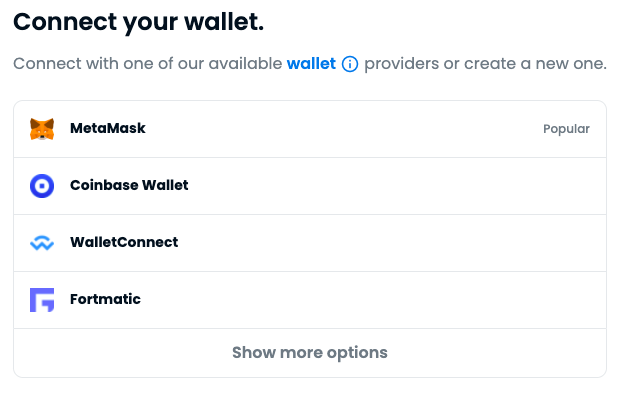
2. Create an account and link a wallet
Go to opensea.io and click the “Create” button.
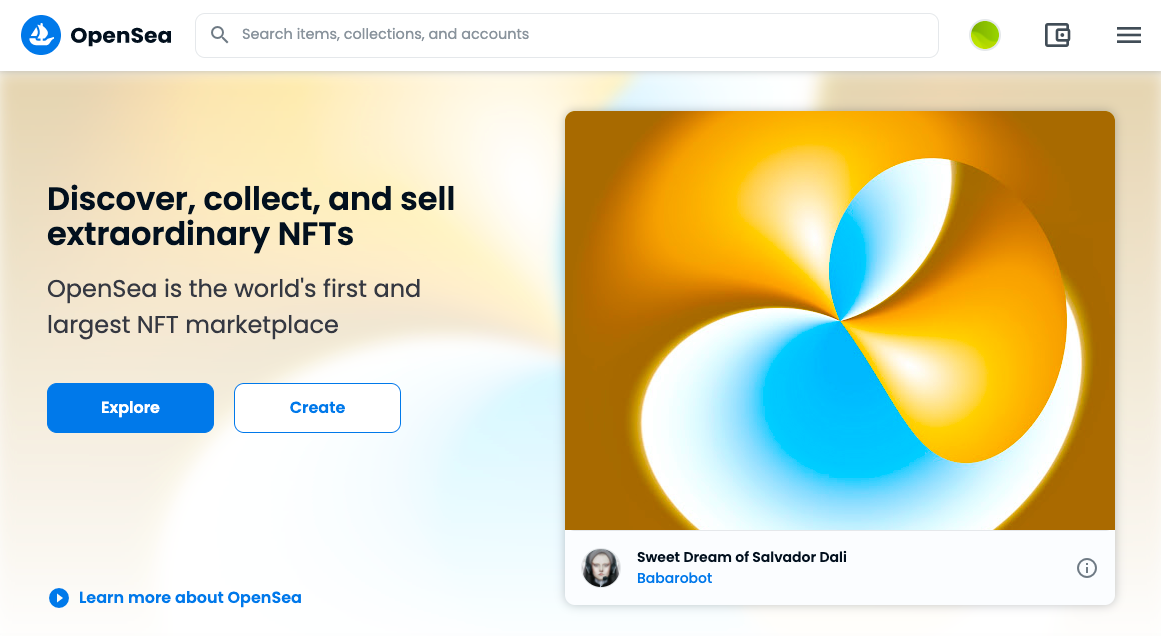
Next, select the platform on which the wallet was created from the list and link it.
N.B. On OpenSea, you can view and manage NFT created on other platforms if they were linked to the selected wallet.
In the window that appears, fill in the profile data and click “Save”. Follow the link in the email sent to confirm registration.
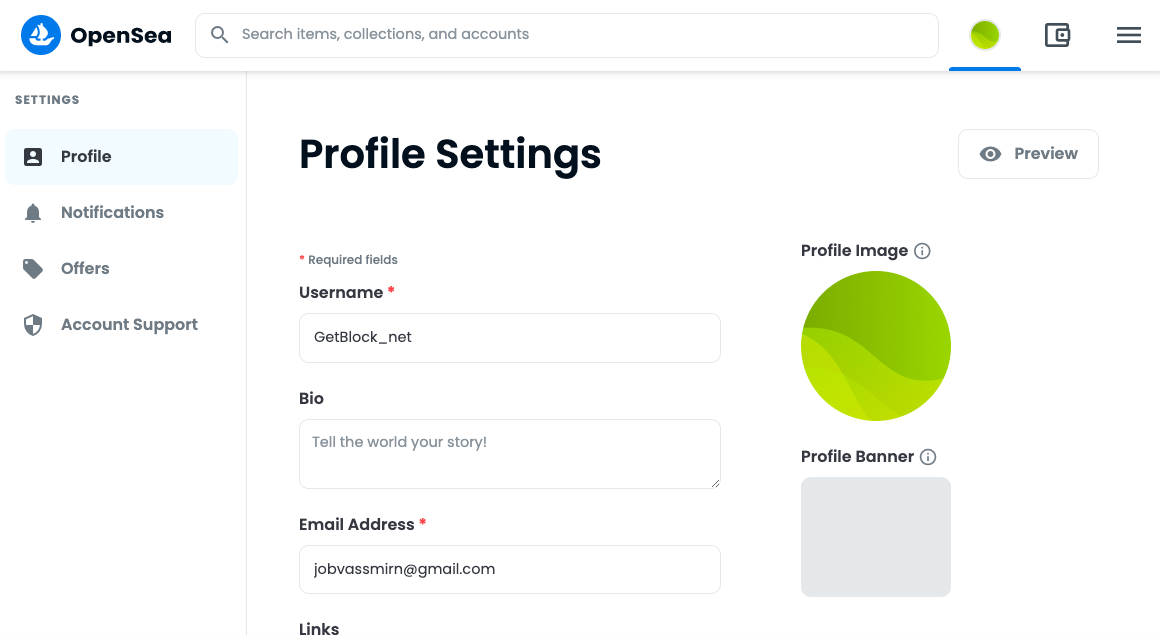
3. Create a collection
If you plan to create a set of multiple NFTs, rather than one independent token, you need to create a collection. If you do not need the collection, go to step 4. It is recommended that you first become familiar with the content of other users and study the interface of the site itself. To do this, you can go back to the main page and click the “Explore” button.
In the upper right corner, hover over the profile icon and select “My collections”. In the new window, click “Create a collection.” In the same tab, you can export collections from other platforms (the button with three dots).
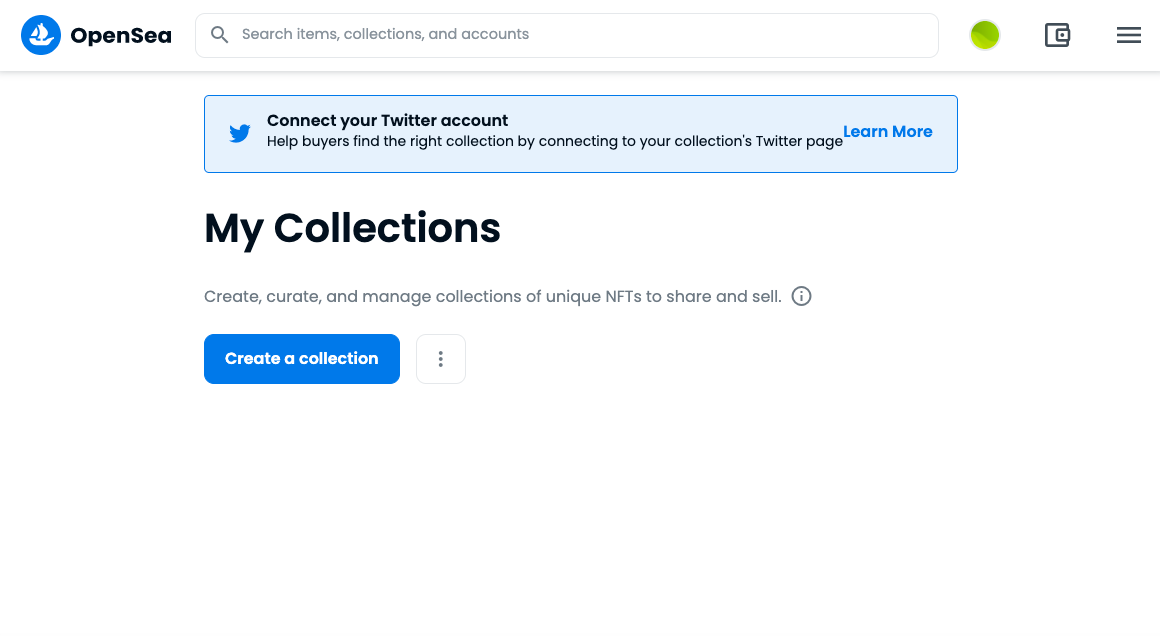
Upload the collection logo (350x350px), the main image (600x400px) and the banner (1400x400px). Enter the name and description, and you can also add an additional link to the NFT presentation web site.
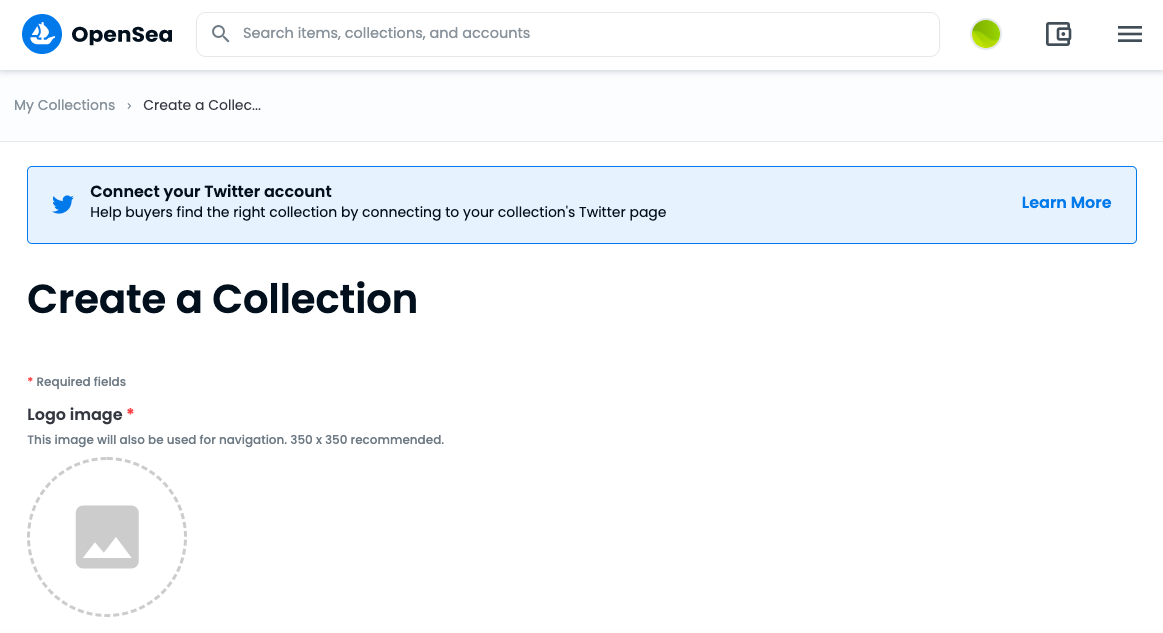
Here you can also set up a royalty, which is the percentage you will receive from each resale of your token. Choose the blockchain on which NFTs will be stored (only Ethereum and Polygon are available at the moment) and the cryptocurrency for which the token will be sold. OpenSea supports most existing coins.
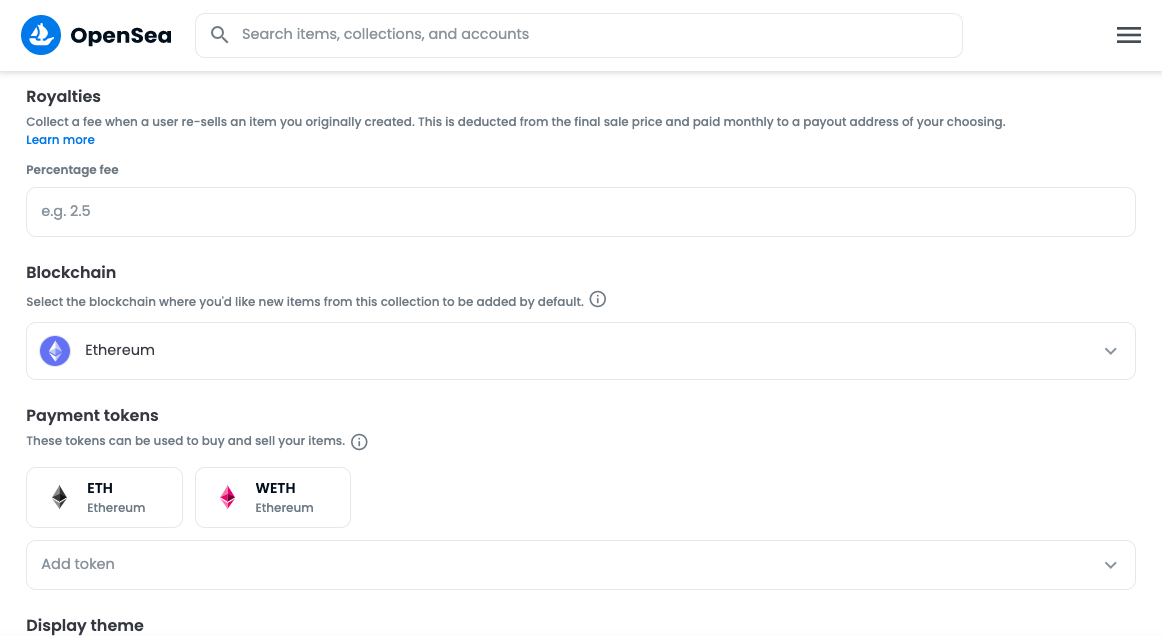
Next, you can customize the type of collection display and check the box if your content is sensitive. Click “Create” and the collection is created.
4. Create an NFT
In the tab with the collection you have created, click “Add item” (if you have not created a collection, click “Create” on the main page).
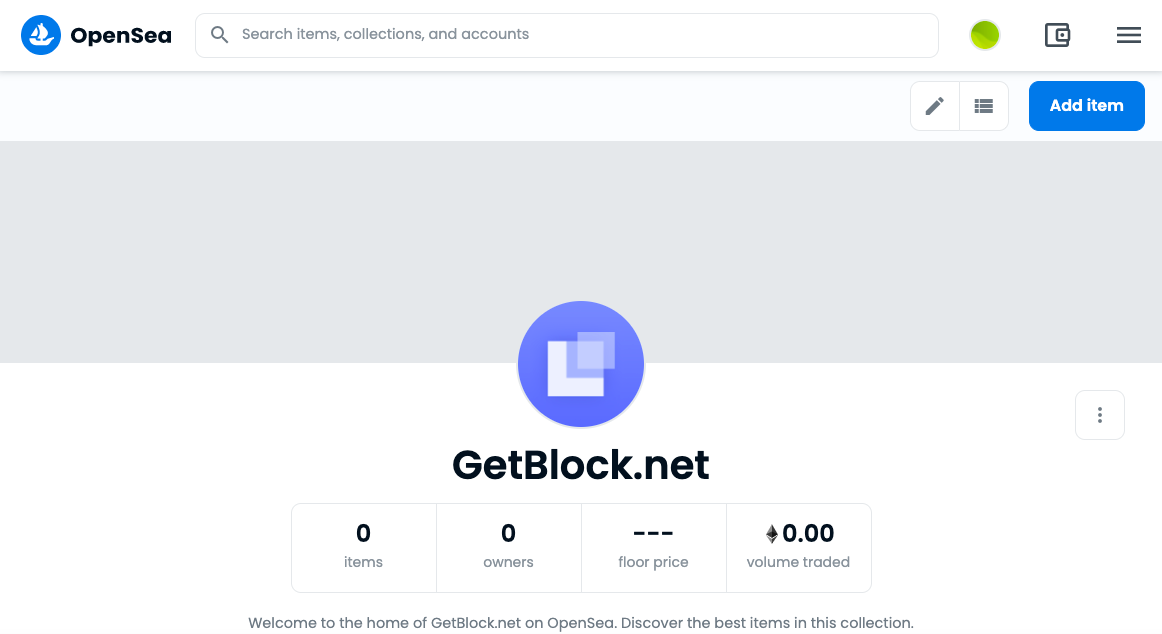
Upload the future NFT. This can be an image, video, audio, or 3D model. The formats OpenSea supports are jpg, png, gif, svg, mp4, webm, mp3, wav, ogg, glb, gltf. The maximum file size is 100MB.
Enter the name and description of the token, you can also add an additional link.
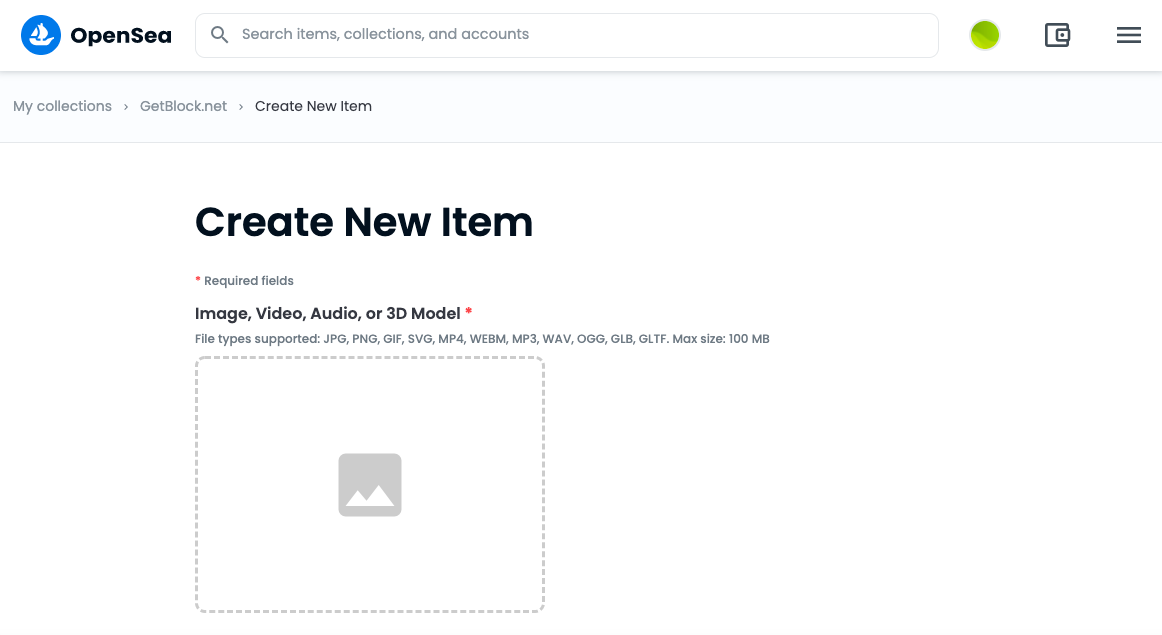
Next, select the collection and configure additional token data.
- Under “Properties” you can add the name and type of your character.
- In “Levels” you can add characteristics, such as speed or endurance, they are displayed as progress bars.
- The “Stats” item is similar to the previous one but is displayed as numeric values
- You can also add unlockable content in the “Unlockable Content” column. This can be an access key, a link to a file, or a confirmation code.
- “Explicit & Sensitive Content” includes sensitive content.
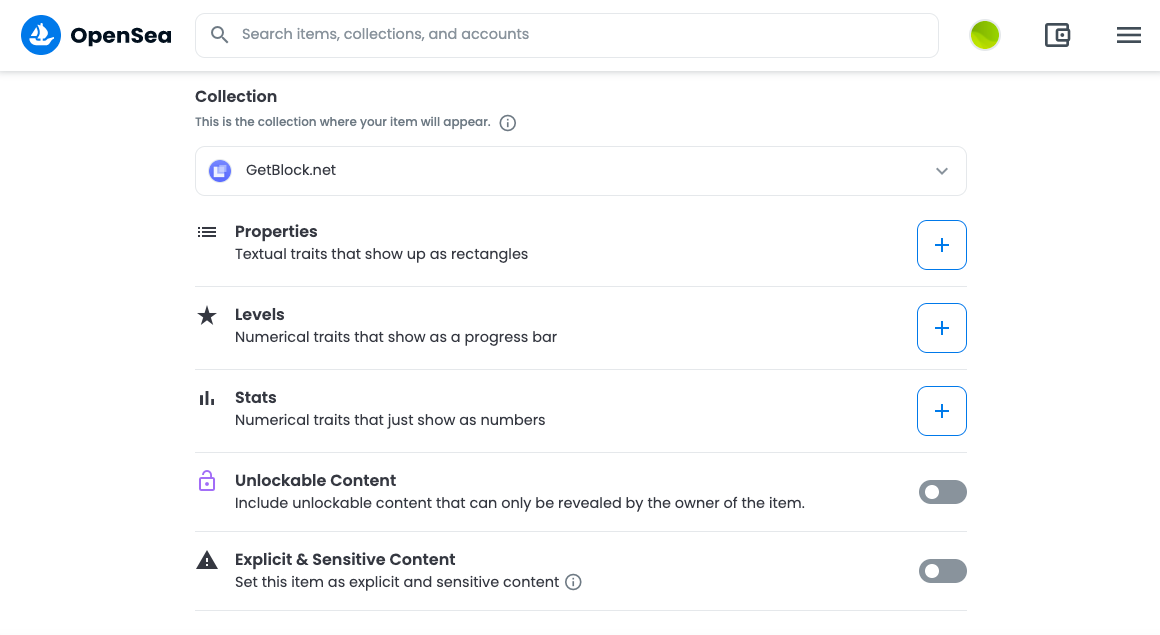
Next, it is suggested to choose the number of tokens to be issued, but this function is not yet available. Decide on the blockchain.
After creating the first NFT, it will be possible to freeze metadata. This will allow you to permanently lock and store your token in a decentralized file system.
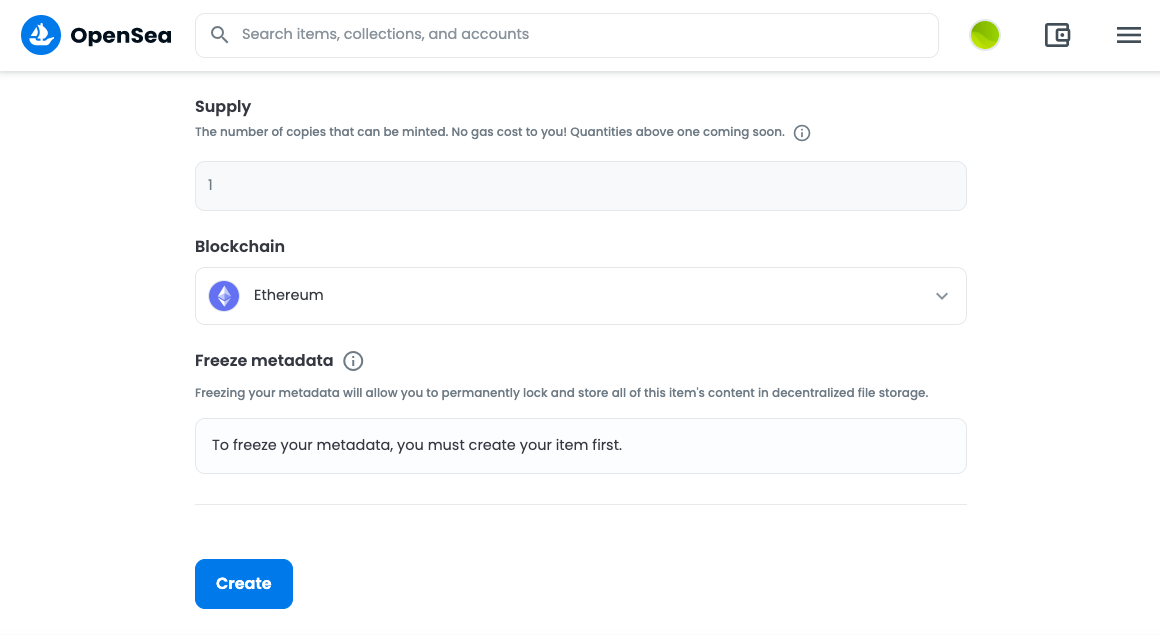
Click “Create”, the NFT is created.
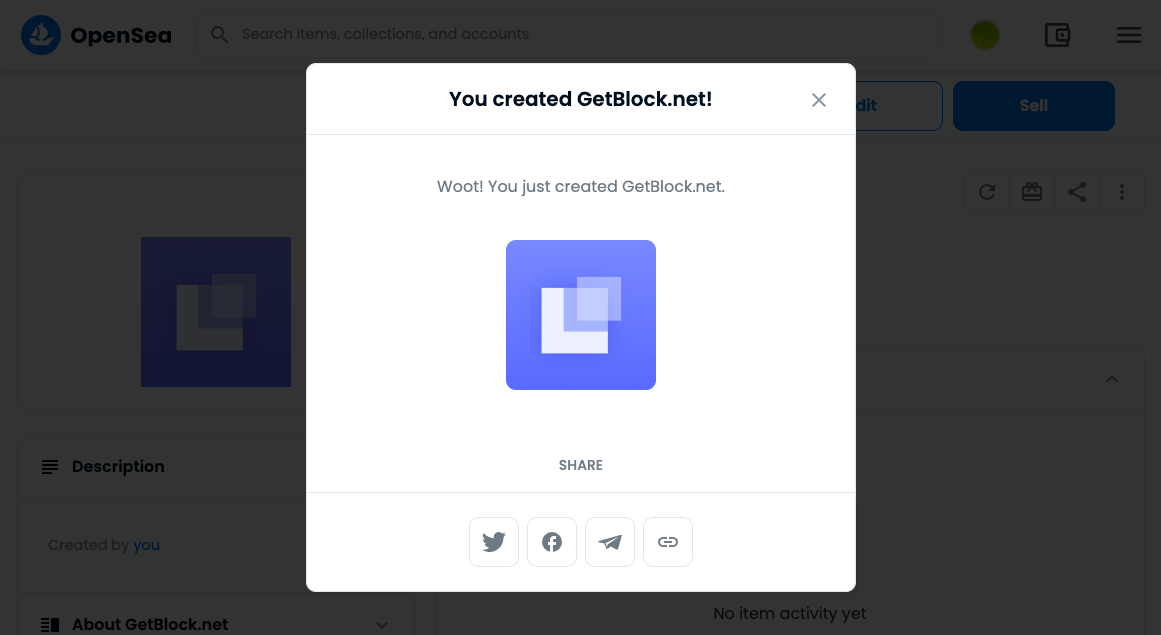
5. Put NFT up for sale
Select the created NFT and click the “Sell” button. In the window that appears, configure the sale parameters.
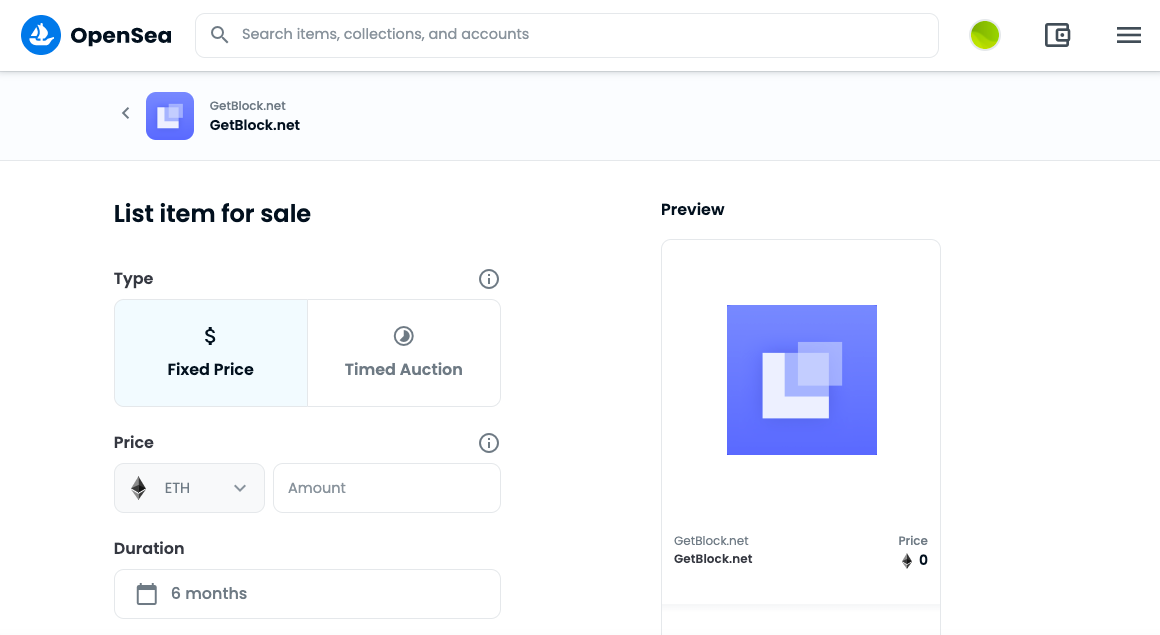
You can set a fixed price, or set up an auction.
If you set a fixed price, you can set the value in ETH and the time that your token will be displayed in the catalog. You can also sell multiple tokens as a set or reserve an NFT for a specific buyer by entering their wallet address.
When selecting an auction, the NFT can be sold for the highest bid, or when the price drops. Enter the initial bid and the time of the auction. You can also include a reserve price – if the bid does not reach the specified amount after the expiration, the token will not be sold. Only wETH (wrapped ETH) is used for the auction.
The platform’s commission is 2,5%. After completing all the settings, click “Complete listing” and confirm the transaction through the wallet.
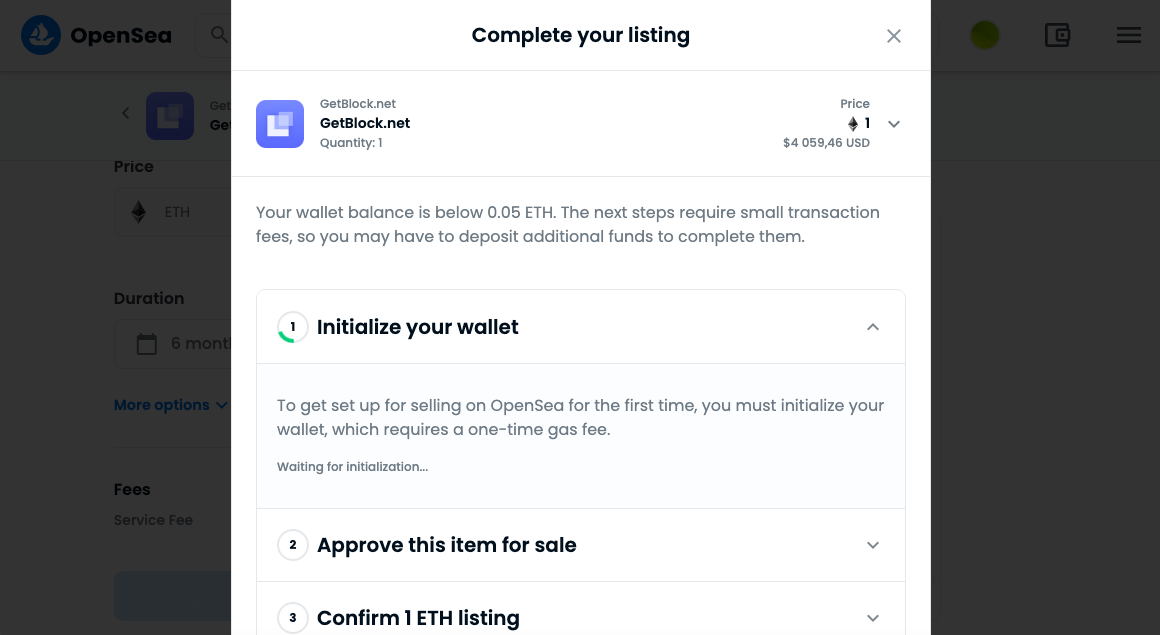
N.B. On OpenSea, the token will not be put into the main blockchain until it is bought. The commission will be charged only after the purchase.
This was only one of the ways to create your own NFT. There are many other platforms besides Open Sea. But do not forget that the success of a token lies in its uniqueness and in the interest it has for people. Experiment, come up with new ideas, and, perhaps, you will be able to create a successful NFT.
Useful material?
Basics
Why Satoshi Nakamoto’s technical manifesto for a decentralized money system matters
Oct 31, 2022
Basics
Experts evaluated the development prospects of the new ecosystem and the investment attractiveness of its token
Oct 20, 2022
Basics
How to track fluctuations correctly and create an effective income strategy
Sep 13, 2022
Basics
Review of the most profitable offers from proven trading platforms
Aug 29, 2022
Basics
The Ethereum Foundation team has published a breakdown of major misconceptions about the upcoming network upgrade
Aug 18, 2022
Basics
What benefits the exchange offers, and what else is in the near future
Aug 4, 2022









 Telegram
Telegram  Twitter
Twitter